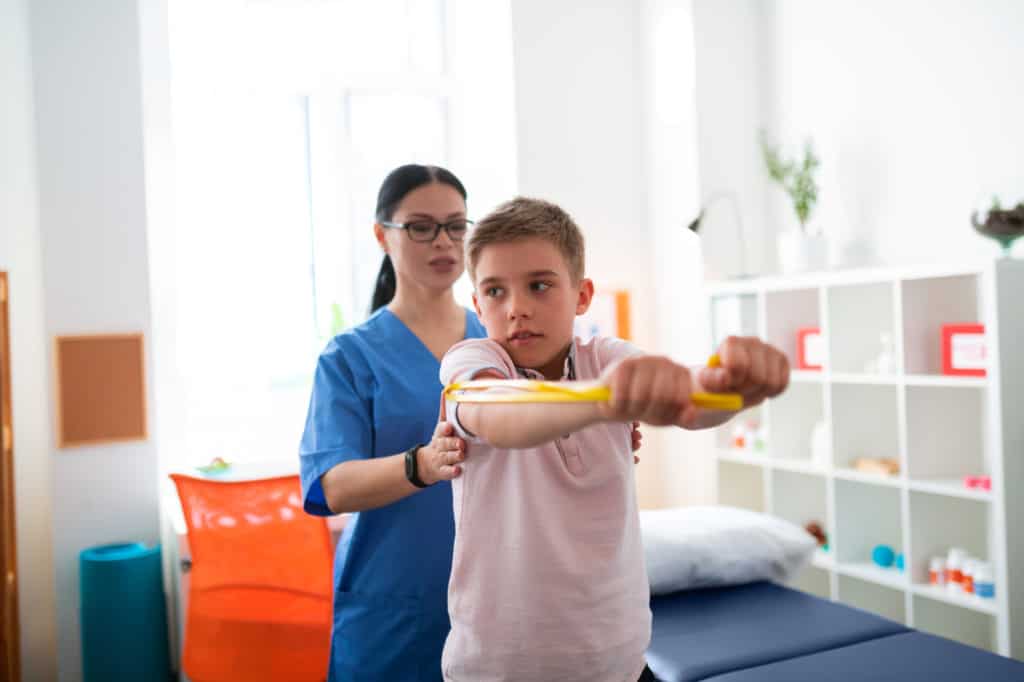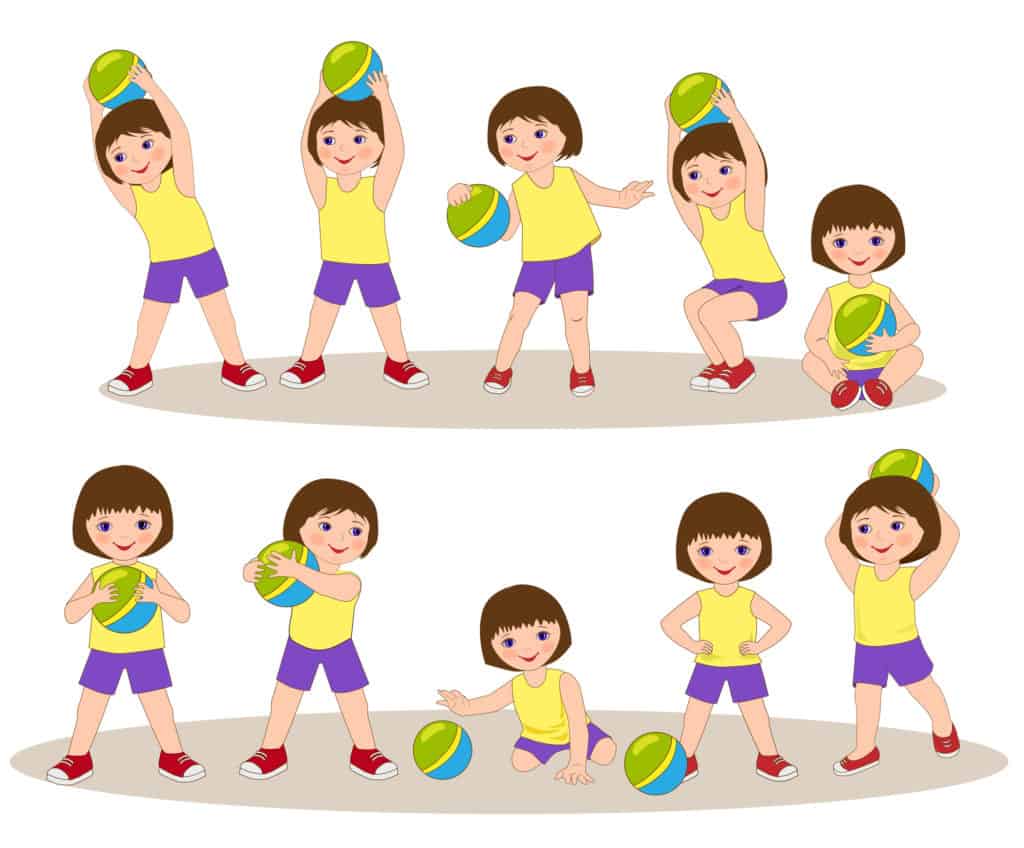
It’s a question we hear regularly: Can my child come for physical therapy?
Here’s the answer.
Physical therapy isn’t just safe for your children, it’s massively advantageous to their wellbeing, too!
Not only can physical therapy help your child’s somatic development, but physical impairments, injuries, and chronic health conditions can all be addressed. If you – or your child – is blocking them on their path to full potential, physical therapy can combat these concerns.
This is why we believe that PT is one of the greatest gifts you can give to a growing child.
More Blogs from Cardin & Miller Physical Therapy
How Do I Know That Physical Therapy Will Help Me?
How Can Physical Therapy Help My Shoulder Pain?
What Exactly Are Foot Orthotics? And How Can It Help Me?
Injuries Are Not Limited To Adults: Let Your Child Be Free!

Let’s be honest. Wounds, abrasions, and trauma are not limited purely to adults.
Few of us escaped childhood without sustaining some form of injury – whether it was a bicycle ride gone wrong, falling off the jungle gym, or accidental impact with an otherwise unsuspecting household object.
Broken bones, strains, sprains, muscle damage, and ligament pain remains an expected, almost inevitable, part of growing up, especially as your child explores their surroundings with increased curiosity.
It’s hard not to try and prevent your offspring from suffering these torments. After all, no parent wishes pain and discomfort on their children.
However, for a prosperous and fulfilling childhood, you need to let your youngsters enjoy an active adolescence. Unless you prevent and discourage the adventures, contact sports, and general mayhem that define childhood, you won’t be able to stop accidents from happening.
What you can do is help your child back on their feet and support them throughout the healing process. This is where physical therapy comes in.
Physical Therapy for Children

First of all, if you haven’t encountered physical therapy before, put all those misconceptions to bed. Physical therapy is a non-injurious, non-invasive treatment that aims to aid, restore, and maintain the correct movement of the muscles and joints.
Physical therapy sessions for children are very similar to those for adults. However, there are important differences. Children are not “mini-adults.” A youngster’s body, muscles, and bones are different from an adult’s.
Depending on the child’s physical condition, a therapist will incorporate gentle exercises and other activities that manipulate the body to recover from impairments that hinder abilities, gain strength, and maintain health.
Subject to each child’s circumstances and situation, therapy can last anywhere from a matter of weeks to beyond a year. The exact time required revolves around two big objectives; your child’s wellbeing and how they respond to treatment.
Regardless of whatever ailment requires attention, physical therapy aims to reduce pain and improve mobility. (Or as we say: Move Better, Feel Better, LIVE BETTER!) It’s also a great way to judge whether surgery is actually required, and an excellent way to prevent disability later in life.
If your child currently struggles because of existing injuries, then physical therapy could be the key to their healing. Should they have an illness that causes chronic pain, then PT can help to manage the discomfort. It can also help to prevent future injuries.
Mental health also comes into play. By engaging in a program that assists in granting as much independence as possible, your child can enjoy their childhood and carry that positivity into their adulthood.
It’s important to ensure that the licensed clinic you select understands how to approach physical therapy for children.
By choosing a clinic that embraces the importance of engaging and building trust with your child, you can rest easy knowing that a positive relationship is being fostered between your kiddo and the therapist.
Without that strong bond, there isn’t much of a chance for progress to happen. If your child finds the therapy sessions to be a chore, or they aren’t enjoying themselves (“having fun”), they’ll be less likely to do the required exercises.
How Do I Know If My Child Needs Physical Therapy?

It’s not always as straightforward as recognizing an injury or ailment.
Boiled down, physical therapy aids and facilitates movement in children for a better-developed form. If your child struggles to use their natural abilities to overcome adversity and physical impairments, physical therapy is likely to be the answer.
Benefits of seeing a physical therapist depend on the child’s medical status and the individual challenges they face.
Let’s take a look at one case where the youngster in question is dealing with the effects of cerebral palsy. Physical therapy played a very important role in helping the child to regain control over the parts of their body affected by the condition.
How?
It all comes down to working with the child in a planned manner. By doing this over time, the range of motion is improved. Enhanced muscle control permits more robust coordination and control.
Movement and balance issues in children who have cerebral palsy can be limited to one half of the body (hemiplegia), the legs (diplegia), or across all four limbs (quadriplegia).
Once again, each child reacts differently to treatment.
Typical approaches for Cerebral Palsy include:
- Sensory integration
- Conductive education
- Constraint-induced movement therapy
- Exercises that focus on posture, i.e. kneeling, and core muscle strength.
Then there are the sporting injuries – which remain incredibly common in children. After all, kids love contact sports! Should an injury occur out on the field, physical therapy aids recovery and speeds up healing time.
One of the most common cases we see involves damaged cruciate ligaments. PT assists in regaining the strength required in the injured leg to eventually get back to playing sports, while minimizing scar tissue and preventing future disability.
By utilizing physical therapy after an injury, improper function of the leg can be prevented too. This saves any nasty surprises that pop up later in life, when the improperly healed limb could cause a domino effect when grown.
As a final point, if your child has had surgery, then PT is excellent for post-surgical rehabilitation – helping to relieve pain, restore muscle control, and build strength through the means of targeted exercises, so that they can safely return to playing their sport.
Helping Your Child Develop and Grow

As a parent, you will naturally feel concerned about your child’s ability to walk, communicate, and grow. Physical therapy can also help address delays in development and congenital abnormalities.
The specific treatment plan varies from child to child, with child-focused exercises and evaluation differing from case to case. Some of the treatments include:
- Flexibility exercises to aid mobility
- Stretching exercises to improve range of motion
- Application of heat/cold packs
- Carefully administered electrotherapy for improved muscle control
- Ultrasound scanning to assist with blood circulation following injury
- Training exercises that ensure strength is established in the core muscles
- Adaptive movements to help your child function in spite of any permanent physical disability
- Exercise suggestions to do at home between appointments
All while your child feels like they are just playing.
Are There Any Risks for My Child?

Pediatrics always brings an element of risk. Besides the anxiety of your child undergoing physical work, you will naturally feel concerned about the after-effects. However, any form of risk with PT is really very, very low.
That being said, while physical therapy is a safe, non-invasive treatment, your child may complain of discomfort after the therapy session. Don’t worry, this discomfort is normal. During the early stages of PT and the first stage of appointments, a certain amount of discomfort is to be expected.
This discomfort is different from feeling pain, however. The sensation of discomfort comes from the body reacting, shifting, and aligning. It’s all in the name of progress and will diminish with ongoing sessions.
Furthermore, physical therapy for children involves working with areas of the body that are still developing, making these areas more delicate and weaker than an adult counterpart. This can lead to soreness afterwards, and your child may feel more tired than normal.
Should your child experience any negative symptoms (pain) after more than a couple of sessions, then please make sure that the therapist is informed. This will help them to determine if movements during the therapy sessions have perhaps aggravated an underlying health issue and redesign the plan of care accordingly for future exercises.
Another point of caution comes from the most stereotypical aspect that children display – overdoing it! Children have an enormous level of energy to burn, and this can lead to enormous levels of enthusiasm!
You may have to act with caution and ensure that your children don’t harm themselves by getting too excited, especially when undertaking the recommended “At Home” exercises between appointments.
Why? Well, because it’s important that your kids only perform the prescribed exercises a certain number of times per day. If they overdo it, the recovery time will become elongated and could cause further injury.
Act Now for Your Child!

At the risk of sounding cliche, children grow up incredibly quickly. Don’t delay getting treatment for your child if you think they need it. By delaying treatment when it’s required, you can leave a negative impact on their future.
Keep that in mind when considering physical therapy for your child.
Would you like to discuss this further or book physical therapy sessions for your children? Get in touch with us through our contact page. We’d be more than happy to help!


